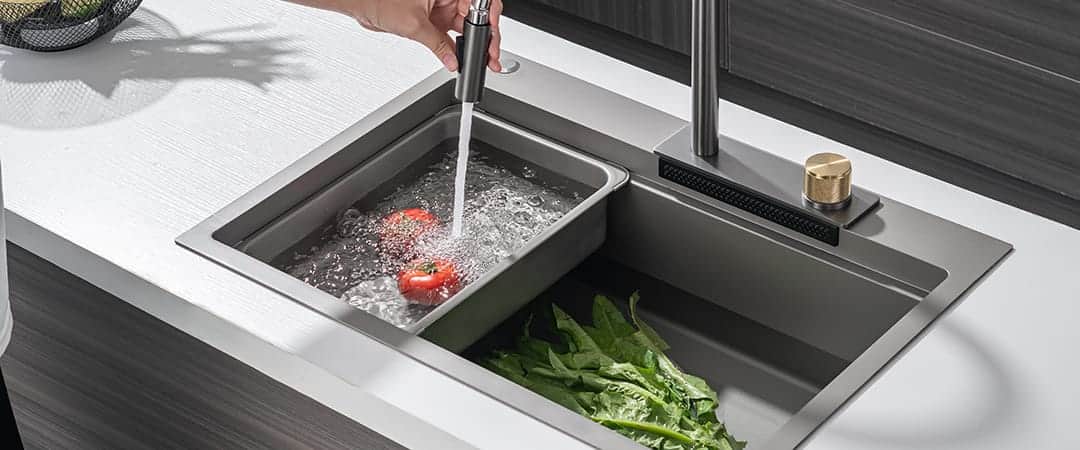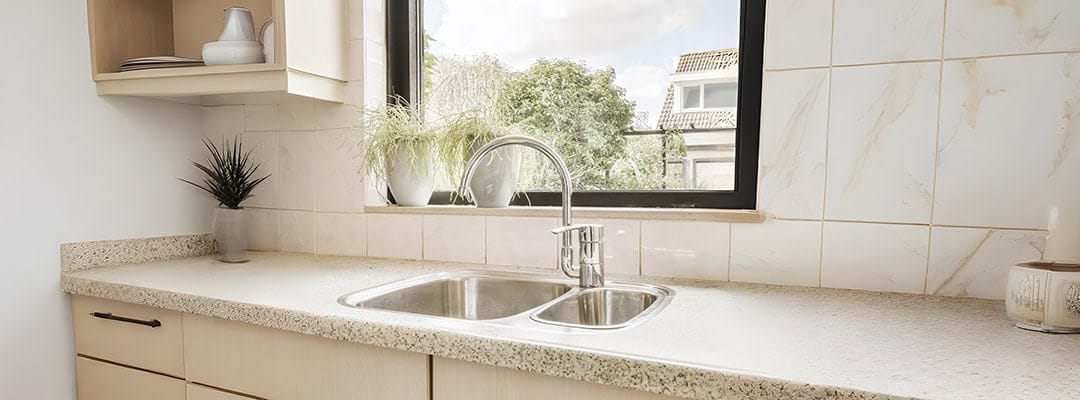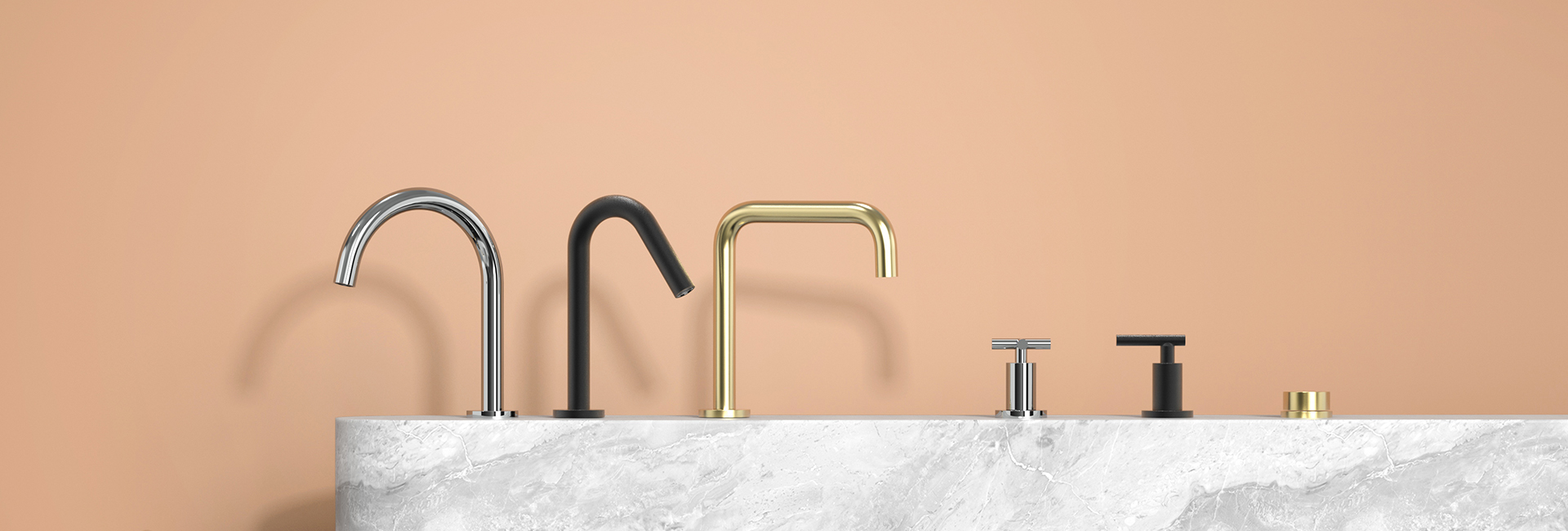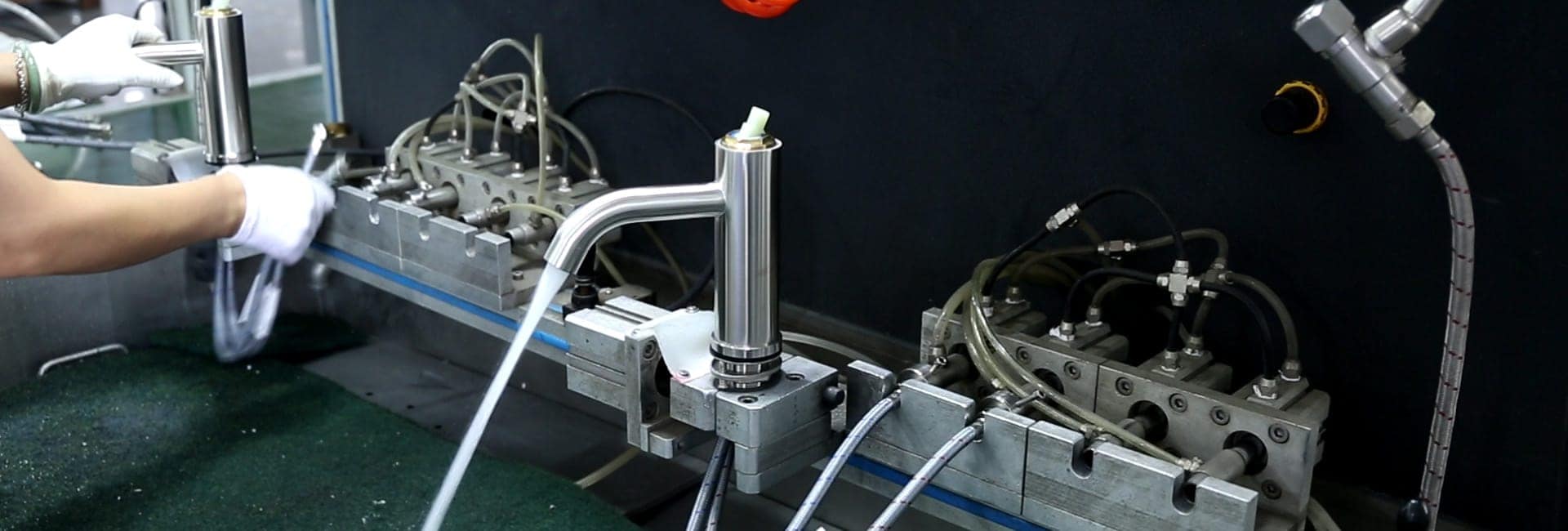You’re planning your kitchen remodel and keep spotting those sleek workstation sinks—complete with cutting boards, colanders, and drying racks. The marketing makes them look like a game-changer for kitchen efficiency.
But then comes the question: Is this real, or just an expensive trend? Are you investing in true convenience or a high-maintenance gadget?
You’re in the right place. I’ll cut through the hype, share the real pros and cons, and help you decide if a workstation sink truly fits your kitchen.
First, What Exactly Is a Workstation Sink?
Let’s start with the basics. A workstation sink isn’t just a basin for washing dishes. It’s a system built around a single-bowl sink that has one or two integrated ledges or tracks inside. These ledges are designed to hold custom-fit accessories that slide across the sink, effectively turning your sink into an extra work surface.
The most common accessories that come with these sinks are:
- A Cutting Board: Lets you chop and prep right over the sink, so scraps and juices fall directly in.
- A Colander: Perfect for rinsing vegetables or draining pasta.
- A Roll-up Drying Rack: A convenient spot to air-dry a few dishes without cluttering your countertop.
- A Bottom Grid: A metal rack that sits on the sink floor to protect it from scratches.

The Dream: Why Everyone Is Talking About Them
There’s no denying the appeal. Manufacturers and designers highlight a few core benefits that make these sinks seem like a must-have upgrade.
- A Boost in Efficiency: The main selling point is creating a streamlined workflow. You can wash, chop, rinse, and clean all in one contained spot. For people who cook a lot, this promise of a hyper-efficient “cooking zone” is incredibly attractive.
- A Genius Space-Saver: If you have a small kitchen, a workstation sink can feel like a miracle. The ability to use the space over the sink as a functional countertop is a game-changer, freeing up valuable real estate for other tasks.
- Contain the Mess: All the messy prep work—like trimming meat or peeling vegetables—happens over the sink. This means drips, crumbs, and other debris are contained, making cleanup significantly easier.
- Sleek, Modern Aesthetics: Let’s be honest, they look fantastic. A workstation sink can be a stunning focal point, adding a touch of modern sophistication to your kitchen design.

The Reality: What the Brochures Don’t Tell You
Now, let’s talk about the things you won’t see in the glossy ads. I’ve spent a lot of time digging through real user reviews and forum discussions, and a few key themes emerged about the day-to-day frustrations.
The Cleaning Problem Is Real
While some happy owners say their sink is a “breeze to clean” , a significant number of people find the opposite to be true. This is, by far, the biggest complaint.
- Those Sharp, “Zero-Radius” Corners: Many modern sinks feature sharp, 90-degree corners for a crisp look. Users describe these as a “nightmare” to clean. Gunk, grease, and food particles get trapped in these corners, requiring special tools like a toothbrush or even a butter knife wrapped in a cloth to scrub them out.
- The Ledges Get Grimy: The very ledges that make the sink a “workstation” are also another place for grime and standing water to collect. While a quick spray-down helps, they require regular attention to keep them from getting gross.

- The Bottom Grid Burden: That protective bottom grid? It’s a double-edged sword. While it prevents scratches, it also traps food particles and develops a slimy film. Many users report having to soak it in bleach or put it in the dishwasher weekly to get it truly clean.
- The Drainage Dilemma: Many of these large, single-basin sinks have a very flat bottom. This means water doesn’t always flow neatly to the drain. Users frequently complain about “chasing food detritus around the sink” with their sprayer to get it all down the disposal. Proper installation is critical to ensure there’s enough slope for drainage.
To tackle these issues head-on, here’s a practical guide to keeping a workstation sink clean.
| Feature | Cleaning Challenge | Recommended Tools & Products | Frequency | Expert Tip |
|---|---|---|---|---|
| Zero-Radius Corners | Gunk, grease, and food particle buildup | Detail brush, toothbrush, or a butter knife wrapped in a cloth ; Bar Keepers Friend | Weekly Deep Clean | For stubborn grime, make a paste with Bar Keepers Friend and let it sit for a minute before scrubbing. |
| Integrated Ledges | Standing water, mineral scale, and slime buildup | High-pressure faucet sprayer, small squeegee , microfiber cloth | Daily Wipe-Down | After use, give the ledges a quick rinse and wipe them dry to prevent mineral deposits, especially in hard water areas. |
| Bottom Grid | Grease, coffee grounds, and food particles trapped underneath | Soak in the sink with bleach/detergent , dishwasher (if it fits), handheld brush | Weekly Soak | Opt for a grid that is dishwasher-safe. For manual cleaning, a soak in hot, soapy water with a little bleach makes scrubbing much easier. |
| PVD/Colored Finishes | Susceptible to harsh chemicals, shows water spots | Soft sponge/cloth, pH-neutral soap, mineral oil for protection | As Needed | Avoid abrasive cleaners like Comet. After cleaning, apply a thin coat of mineral oil to repel water and reduce spotting. |
The Accessory Paradox
The accessories are the star of the show, but they come with their own set of challenges.
- Questionable Quality: While high-end brands offer high-quality accessories, the ones included with more budget-friendly sinks can be a letdown. I’ve seen reports of wooden cutting boards warping or staining, and colanders feeling flimsy.
- The Storage Hassle: This is the question nobody seems to ask before buying: when you need to wash a large roasting pan, where do you put the bulky cutting board and colander? Storing these items can be a pain, especially in a small kitchen where cabinet space is already at a premium. You can find under-sink organizers at places like container store».
- They Can Get in the Way: If you’re someone who likes to leave a few dishes soaking, the accessories will constantly be in your way. You’ll find yourself shuffling them around just to use the sink as, well, a sink.
The Single Most Important Factor: Size Determines the Value
Here’s the most crucial piece of insight that most articles miss: the value of a workstation sink is almost entirely dependent on its size.
I saw one user on a Houzz forum put it perfectly: a workstation sink under 36 inches is often just a “gimmick,” while one that is 42 inches or wider is a true “workhorse”.
Why? Because on a smaller sink (e.g., 30-33 inches), the accessories take up most of the basin. You can’t really use the cutting board and have space to wash things at the same time. The accessories become an “either/or” proposition. On a large sink (42″ or more), you can have the cutting board on one side and still have a huge open area for washing dishes or for a second person to help prep. That’s when the efficiency promise really comes to life.

A Framework for Your Decision: Who Is It Really For?
So, let’s break it down. Should you get one? It depends entirely on who you are and how you use your kitchen. To make it easier, I’ve created a guide based on different user types.
| User Profile | Core Need | Recommended Size | Ideal Material/Features | Must-Have Accessories |
|---|---|---|---|---|
| The Avid Home Chef | Maximum efficiency, multitasking, seamless prep-to-cook flow | 42″ or wider | 16-gauge stainless steel, dual ledges, offset drain | Multiple cutting boards (for cross-contamination), colander/bowl sets, knife holder |
| The Small Kitchen Space-Maximizer | Saving countertop space, consolidating tasks | 27″ – 33″ | Any material, but a large single bowl is key. Undermount installation is critical. | Roll-up drying rack (easy to store), a large cutting board that covers the entire sink |
| The Aesthetics-Focused Remodeler | A statement piece, seamless design, unique finishes | 33″ or wider | Fireclay (farmhouse look), granite composite, or PVD-coated stainless steel (gold, gunmetal) | Accessories that match the sink finish (e.g., a gold drying rack ) |
| The Busy Family | Durability, easy cleaning, washing large items, hiding clutter | 36″ or wider | Stainless steel or granite composite with small-radius (not zero-radius) corners | Deep soaking basin, protective bottom grid, roll-up drying rack |
You Should Probably Reconsider If:
- You hate detailed cleaning. If the thought of scrubbing corners with a toothbrush makes you cringe, you will likely grow to resent this sink.
- You tend to leave dishes in the sink. If your sink often has a few items soaking, the accessories will just be an obstacle you have to constantly move.
- You’re on a tight budget. These sinks and their proprietary accessories are more expensive than a standard undermount sink. You might get more bang for your buck by investing that money elsewhere, like in better appliances.
Workstation vs. Double Bowl: A Head-to-Head Comparison
Another major decision point is whether to choose a workstation sink over a traditional double-bowl sink. They serve very different purposes, so let’s see how they stack up in common kitchen scenarios.
| Kitchen Task | Single-Bowl Workstation Sink | Traditional Double-Bowl Sink | The Winner & Why |
|---|---|---|---|
| Washing Large Roasting Pans | Excellent | Poor (divider gets in the way) | Workstation Sink: The large, unobstructed basin is perfect for oversized items. |
| Handwashing Dishes (Wash & Rinse) | Fair (requires a basin-in-basin or washing all at once before rinsing) | Excellent (one side for soapy water, the other for rinsing) | Double-Bowl Sink: This is the exact workflow it was designed for. |
| Prepping Veggies While Soaking a Pan | Good (cutting board can sit over the pan soaking below) | Excellent (pan soaks in one basin, leaving the other free for prep) | Tie: Both are effective, but the double bowl offers better separation. |
| Containing Prep Mess | Excellent (all scraps and drips are contained within the sink) | Good (mess is limited to one basin) | Workstation Sink: The integrated cutting board makes the entire process cleaner. |
| Food Safety (e.g., Thawing Meat) | Good (can be done in a separate basin placed in the sink) | Excellent (meat thaws in one basin, completely separate from other tasks) | Double-Bowl Sink: The physical separation is inherently safer for preventing cross-contamination. |

If You’re Buying, Here’s What to Look For
If you’ve decided a workstation sink is right for you, don’t just buy the first one you see. Pay close attention to these details:
- Material and Gauge: Stainless steel is the most common material. Look for 16-gauge steel, which is thicker and more durable than 18-gauge. Granite composite and fireclay are also great, durable options if they fit your style. You can explore a variety of materials at retailers like home depot».
- Corner Radius: This is critical for cleaning. Avoid “zero-radius” corners. Look for sinks with “small radius” or “gently rounded” corners. This small detail will make cleaning infinitely easier.
- Drainage: Check for a sloped bottom and an offset drain (placed to the rear or side). This not only helps with drainage but also frees up more usable storage space in the cabinet below.
- Brand Reputation: There’s a huge range, from affordable brands like Kraus and Ruvati to ultra-premium systems like the galley», which can cost thousands and are made from marine-grade steel. Read reviews specifically about the quality of the included accessories.
The Final Verdict: So, Are They Really Worth It?
After all this, the answer isn’t a simple yes or no. It’s about matching the product to your lifestyle.
I think a workstation sink» is worth it for a specific type of person: the passionate home cook who has the space and budget for a large model (42 inches or more) and who will genuinely use the features every day. For this person, it’s a functional upgrade that can truly enhance their time in the kitchen.
For those with small kitchens, it’s a compelling but compromised choice. It solves the counter space problem but introduces new challenges with cleaning and accessory management. It can be worth it, but only if you go in with realistic expectations.
And for the casual cook who prioritizes low maintenance above all? I’d say skip it. A high-quality, large single-basin sink with rounded corners and a few well-chosen, non-integrated accessories (like a separate cutting board and a roll-up drying mat) will give you a similar level of function without the cleaning headaches and high cost.
FAQs
About Luxuryhome
Luxuryhome is not just a faucet manufacturer or wholesaler, but more like a partner who can provide you with more added value.
We are united in our determination to produce China-made bath and kitchen fixtures adhering to the highest ethical principles. You have our promise!
More post you may interested in







